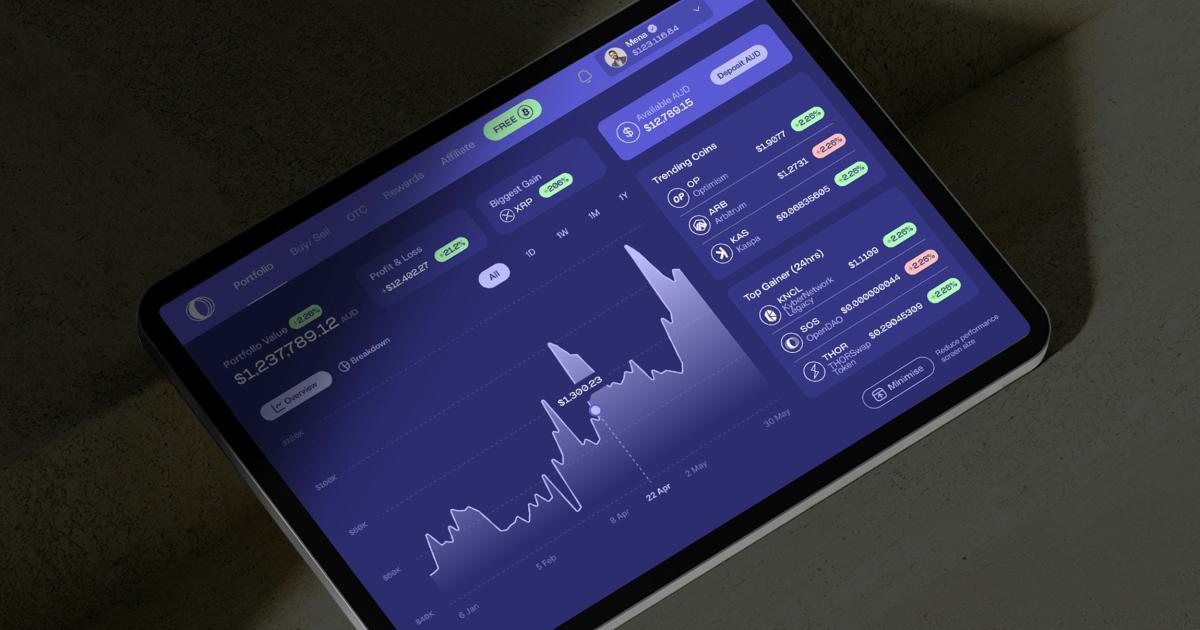Maximize Profits Using Pair Trading Strategies Effectively

Pair trading strategies have emerged as a powerful method among quantitative traders looking to maximize profits while managing risk. In today's dynamically shifting markets, these strategies offer robust and systematic frameworks that allow traders to take advantage of temporary discrepancies in the prices of correlated securities. This comprehensive guide explores every facet of pair trading, from its basic principles to advanced algorithmic techniques. By delving into the historical context, statistical foundations, and real-world applications of pair trading strategies, you will learn actionable insights and expert tips that can transform your trading approach.
Understanding the Foundations of Pair Trading
Pair trading is a form of statistical arbitrage that involves taking two correlated assets and exploiting temporary divergences in their price movements. The underlying assumption is that the two securities will revert to their historical pricing relationship after experiencing a deviation. This market-neutral strategy minimizes risk by balancing long and short positions.
The Origins and Evolution of Pair Trading
The concept of pair trading can be traced back to early quantitative research in the hedge fund industry during the 1980s. Initially popularized by hedge funds looking for risk-managed arbitrage opportunities, pair trading has evolved with the advent of powerful computing resources and the availability of high-frequency data. Today, traders leverage complex statistical models to backtest and optimize pair trading strategies in a variety of markets.
Historically, pair trading strategies relied on manual observation and rudimentary statistical techniques. Over time, advancements in technology transformed this approach by integrating machine learning algorithms and automated trading systems, making pair trading strategies more accessible and efficient. With these improvements, traders gained the ability to analyze large datasets, dynamically adjust positions, and execute trades at speeds unattainable by human traders. These technological strides have enabled a more systematic and quantifiable method of profit maximization.
The Statistical Rationale Behind Pair Trading
At its core, pair trading rests on the principles of mean reversion and cointegration. Mean reversion is the tendency for a price series to revert to its long-term average value, while cointegration indicates a statistically stable relationship between two non-stationary time series. When the price gap between two correlated assets widens beyond historical norms, it may present a lucrative arbitrage opportunity.
A typical pair trading strategy begins with the identification of pairs whose historical price behavior shows significant statistical correlation. Traders then establish threshold parameters that dictate when to open and close positions. Once these conditions are met, a long position is taken in the underperforming asset, and a short position is initiated in the outperforming asset. The positions are held until the prices converge, at which point the profit is realized.

The Mechanics of Executing Pair Trading Strategies
Understanding the mechanics of pair trading is key to successfully implementing these techniques. The process involves careful selection, statistical testing, and rigorous monitoring of the chosen asset pairs.
Selecting the Right Asset Pairs
Identifying appropriate asset pairs is perhaps the most crucial step in constructing a profitable pair trading strategy. Essential factors include:
- Historical correlation: Ensure that both assets have a strong historical correlation.
- Cointegration: Assess whether the asset prices move together in the long run.
- Sector and industry: Often, assets within the same industry or sector exhibit similar market movements.
- Liquidity: Opt for pairs with high trading volumes to avoid issues with executing trades.
Investors often begin with stocks of companies operating in the same sector because similar macroeconomic factors influence them. However, pair trading strategies are not limited to equities; they can also be applied to ETFs, commodities, or even currency pairs.
Quantitative Models Behind Pair Trading
The successful execution of pair trading strategies depends on the robust application of quantitative models. Some of the statistical techniques employed include:
- Linear Regression Analysis: This is used to assess the relationship between asset prices.
- Augmented Dickey-Fuller Test (ADF): Ensures that the price spread is mean-reverting.
- Kalman Filter: A dynamic method used to update estimates as new data comes in.
Each technique helps in validating the position assumptions and determining the optimal entry and exit points. Moreover, sophisticated models incorporate volatility measures to adjust positions in response to rapidly changing market conditions. In many cases, traders use a combination of these methods to create a trading algorithm tailored to their specific risk tolerance and expected returns.
Risk Management and Capital Allocation
A cornerstone of any successful pair trading strategy is the effective management of risk. Market-neutral strategies like pair trading limit exposure to broad market movements, yet they are not without risk. Key steps in risk management include:
- Setting stop-loss limits: Prevent significant drawdowns if the assumed convergence does not occur.
- Diversification: Use multiple trading pairs to reduce the impact of any single miscalculation.
- Dynamic Capital Allocation: Adjust the capital committed to each pair based on ongoing risk assessments and available liquidity.
Capital allocation is optimized by initially setting a fixed fraction of overall capital for a pair trade. As the trading signal develops, the investor may incrementally add to the position or reduce exposure if volatility exceeds predetermined benchmarks. This careful balancing acts as a buffer during market turbulence, preserving capital while maintaining profit potential.

Implementing Pair Trading Strategies in Practice
To translate theory into actionable trading approaches, it is important to address the practical aspects of implementing pair trading strategies.
Developing a Robust Trading Plan
A robust trading plan is the blueprint for success in pair trading. The following steps are integral to formulating such a plan:
Research and Data Collection: Begin by collecting historical price data and relevant market information on the candidate asset pairs.
Statistical Testing: Use statistical software to perform correlation and cointegration tests. Create historical charts to visually inspect trends.
Define Entry and Exit Criteria: Clearly outline the conditions under which trades will be initiated or closed, such as specific threshold levels or standard deviation limits.
Set Risk and Reward Parameters: Calculate potential losses and gains, and ensure that risk-reward ratios are optimized.
Backtesting: Run the strategy on historical data to determine its profitability. Adjust parameters based on backtest results.
Backtesting is crucial because it provides insight into how the strategy performed under various market conditions. However, traders should be cautious to avoid overfitting their model to historical data. Real-world market conditions can vary significantly, so adaptive algorithms that learn from new data are preferable.
Technology and Tools for Pair Trading
Modern traders have access to a host of technological tools that facilitate efficient pair trading:
- Trading Platforms: Software like MetaTrader and NinjaTrader allows custom scripting and automated trade execution.
- Statistical Software: Programs such as MATLAB, R, and Python, with dedicated libraries, are commonly used for statistical analysis and backtesting strategies.
- Data Feeds: Reliable real-time data feeds are essential for accurate signal detection and rapid execution of trades.
- Risk Management Systems: These systems automatically monitor positions and enforce stop-loss rules based on dynamic market conditions.
Technology not only aids in analysis and execution but also helps in maintaining discipline—crucial in a strategy where timing and specific market conditions are key.
Integrating Automation and Algorithmic Trading
Automation has revolutionized pair trading strategies. By integrating algorithmic trading systems, traders can execute orders at speeds and frequencies that eliminate emotional bias and reduce latency. Automated systems constantly monitor market conditions, recalculating statistical thresholds in real time to adjust positions accordingly.
Algorithmic trading systems enable the simultaneous management of multiple pairs, optimizing the overall portfolio's exposure. Moreover, the use of APIs and cloud computing means that strategies can be deployed globally, taking advantage of market opportunities as they arise in different time zones.

Advanced Techniques and Considerations
While basic pair trading focuses on mean reversion and relative performance, advanced techniques integrate deeper statistical analysis and emerging technologies.
Utilizing Machine Learning in Pair Trading
Machine learning offers significant improvements over traditional statistical models by identifying patterns and adapting to new information. Key applications include:
- Predictive Modeling: AI models can forecast future price movements based on historical data and sentiment analysis.
- Anomaly Detection: Machine learning algorithms help in detecting unusual market behavior that may signal shifts in the price relationship.
- Adaptive Strategies: Reinforcement learning enables systems to adjust strategies dynamically, improving risk management and overall returns.
Implementing machine learning can help in refining the selection process by identifying promising pairs and continuously recalibrating entry and exit criteria. Integrating these advanced techniques requires a blend of financial acumen and technical expertise, making collaboration between financial analysts and data scientists essential for success.
Dealing with Market Volatility and External Factors
Even robust pair trading strategies are vulnerable to market conditions that disrupt historical correlations. Sudden macroeconomic events, policy shifts, or sector-specific crises can temporarily or permanently alter the relationship between paired assets. To mitigate these risks, traders must:
- Monitor macroeconomic indicators and news events.
- Adjust thresholds promptly when unusual market volatility is detected.
- Diversify pair selections to avoid overreliance on a single market segment.
Tailoring strategies to account for these external factors may involve setting dynamic parameters that shift based on real-time volatility metrics. For example, during periods of high uncertainty, wider stop-loss criteria may be implemented to prevent premature exit from positions that could eventually yield strong reversions.
Evaluating and Refining the Strategy
Continuous evaluation of the strategy is paramount. Even after a pair trading strategy begins to yield consistent profits, market conditions may evolve. Regular reviews, strategy updates, and recalibration of parameters must be an integral part of the process. Implement the following steps to ensure ongoing success:
Performance Analysis: Regularly measure the strategy's performance against key metrics such as win rate, average profit, and drawdown ratios.
Sensitivity Testing: Assess how changes in market conditions impact the strategy's efficacy. Simulate various scenarios to understand potential vulnerabilities.
Software Updates: Keep trading algorithms updated with the latest market data and advanced statistical models.
Periodic Reviews: Schedule quarterly strategy reviews, incorporating feedback from real-world trading experiences.
In summary, refining a pair trading strategy is an iterative process that demands rigorous testing and a willingness to adapt. With advances in technology, traders can now experiment with more sophisticated models and benefit from the improved precision that modern data analytics provide.

Case Studies and Real-World Examples
Understanding theory is only half the battle. Seeing practical applications and learning from real-world examples can provide additional clarity and confidence in implementing pair trading strategies.
Success Stories in Pair Trading
Several hedge funds and proprietary trading firms have successfully implemented pair trading strategies to hedge against market volatility and generate steady returns. For instance, during the 2008 financial crisis, certain market-neutral funds that strictly adhered to pair trading principles managed to deliver positive returns despite broad market declines. In one notable case, a firm identified a pair of financial stocks that historically moved in tandem but diverged significantly during the crisis. By taking long and short positions simultaneously, the fund was able to capture profits when the prices eventually converged.
Another example involves a trading algorithm that monitored tech stocks during a period of rapid innovation and regulatory shifts. The algorithm dynamically adjusted positions as market sentiment changed, leading to consistent profitability over a range of volatile conditions. These real-world examples underscore the importance of adhering to strict risk management protocols while simultaneously leveraging advanced quantitative techniques.
Lessons Learned from Unsuccessful Trades
Not every pair trading venture concludes successfully. Unsuccessful cases often provide valuable lessons regarding overfitting, unexpected market shifts, and the risks associated with highly correlated assets that suddenly lose correlation. A common pitfall encountered is dependency on a specific market condition that no longer exists—traders might perform extensive backtesting on a pair that historically behaved well under stable conditions, only to encounter swift divergence when a disruptive economic event occurs.
These cautionary tales reinforce the value of dynamic strategy adjustments and the careful monitoring of external market factors. By incorporating robust stop-loss measures and continuously validating the market assumptions, traders can significantly reduce the impact of unforeseen events and safeguard their capital during turbulent periods.
Future Trends in Pair Trading Strategies
As markets evolve, so too will the techniques used to maximize profits through pair trading strategies. Looking ahead, several emerging trends are likely to shape the future landscape.
Integration with Big Data and Real-Time Analytics
The increasing volume of financial data generated daily presents both challenges and opportunities. Future pair trading strategies will leverage big data analytics to assimilate diverse datasets—from social media sentiment to economic indicators—resulting in more robust predictive models. Real-time analytics will further enable traders to adjust strategies on the fly, ensuring that trade signals remain relevant even in fast-moving markets.
Expanding Beyond Traditional Markets
While pair trading initially gained traction in equity markets, there is a growing trend towards applying these techniques in other asset classes. Markets such as foreign exchange, cryptocurrencies, and commodities offer fertile ground for pair trading strategies. Diversification across markets can lead to enhanced profit opportunities and reduce the risk associated with any single asset class.
Regulatory and Ethical Considerations
As with any sophisticated trading approach, regulatory considerations continue to evolve. Enhanced transparency requirements and stricter oversight are likely to impact the implementation of algorithmic pair trading strategies. Traders must stay informed about regulatory changes, ensuring that their automated systems comply with both local and international guidelines. Ethical considerations, particularly in areas such as market manipulation and data privacy, will equally play a crucial role in defining the future boundaries of pair trading.
Conclusion: Maximizing Profits with Discipline and Innovation
Maximizing profits using pair trading strategies effectively requires a balanced blend of quantitative analysis, disciplined risk management, and continuous innovation. By understanding the statistical foundations, selecting the right asset pairs, and leveraging modern technology, traders can develop robust, market-neutral approaches that flourish across diverse economic climates.
The journey to executing successful pair trading strategies is one of continuous learning—combining historical insights, modern data analytics, and adaptive algorithms. Real-world examples serve as constant reminders that while sophisticated models can yield impressive returns, unwavering discipline and vigilant risk management are non-negotiable.
As markets continue to evolve, those who adapt by integrating big data, machine learning, and algorithmic enhancements will remain at the forefront of profitable trading. Whether you are a seasoned professional or a new entrant in the financial landscape, taking the time to master pair trading strategies can provide you with a powerful tool in your investment arsenal.
Embrace the dynamic nature of the markets, remain agile in your approach, and consistently revisit the fundamentals of pair trading. With a strong commitment to continuous improvement and risk mitigation, maximizing profits in today’s complex trading environment is well within reach. The future belongs to those who blend innovation with disciplined strategies—ensuring long-term success in an ever-evolving market.
Unlock the Power of Crypto Trading with Binance
Tired of missing out on lucrative trading opportunities? Elevate your game with Binance, the leading crypto exchange trusted by millions worldwide.
With lightning-fast execution, institutional-grade security, and a user-friendly interface, Binance empowers you to seize market moves with confidence. Plus, enjoy access to 100+ cryptocurrencies and cutting-edge tools. Join now and experience the future of trading.
Unmatched Trading Power with Binance
Are you ready to take your trading game to new heights? Binance offers a cutting-edge platform for seamless cryptocurrency transactions.
With lightning-fast execution, top-tier security, and a vast selection of coins, you'll have all the tools you need to maximize your profits. Join now and experience the future of trading.


